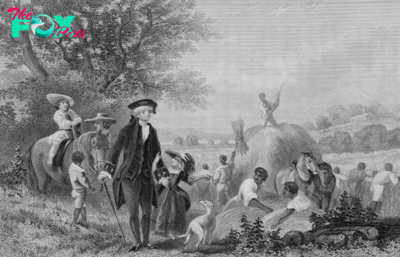History
How Conservatives Changed the Whole Point of American Political Parties
The Republican Party of 2024 belongs to Donald Trump and to MAGA. But the populist right once viewed the GOP very differently.
At the second annual Conservative Political Action Conference in 1975, attendees debated whether they should junk and replace the GOP. One speaker advocating for the move called parties “no more than instruments, temporary and disposable, by which like-minded citizens can express their views.” The conference passed a resolution declaring that “the question of our allegiance to [the two major] political parties is a matter of increasing doubt to conservatives.”
Though a proposed third-party venture went nowhere fast, it reflected the right’s distinctive, cold-eyed approach to the party form. Parties, conservatives thought, served solely as a disposable means to an end, rather than as valuable organizations and instruments of democracy in their own right. And when the forces on the right captured and remade the GOP in their own image beginning in the 1970s, the result was a retreat from the very commitments that had made political parties central pillars of small-d democratic and small-r republican politics. In that sense, the crisis roiling American democracy in 2024 is a half-century in the making.
As conservatives transformed the GOP, they obliterated an older model of Republicanism. In the middle of the 20th century, GOP organizations at their best had functioned as civic institutions rooted in communities. Conservative in form as much as substance, they focused on problem-solving in government, and worked to contain and channel political coNFLict rather than exacerbating it. Such Republican Party organizations reflected the interests and stewardship of local social and economic elites. The political scientist Clinton Rossiter evoked the “Republican self-image” at midcentury as “men of standing and sobriety…sound without being callous.”
Party Politics, in this approach, meant organizing social actors into tempered, pragmatic leadership, not serving up grand clashes of worldviews or all-out warfare across social divides. As such, Republican party work and governance emphasized limits in both the exercise of Politics and the activity of government.
Read More: Trump Is Mapping Out a More MAGA Senate
Ray Bliss, longtime Ohio Republican leader — and then in the 1960s, Republican National Committee chair—typified this approach. To build up GOP organizations, he would cross-check voter registration rolls with membership lists for service clubs like the Kiwanis and Rotarians, chambers of commerce, and country clubs. Averse to ideological infighting or even explicit comment on policy issues, Bliss summed up his own vision of Republicanism in power in 1960: “government which is efficient, yet economical; government that is alert to the changing times, yet guided by common sense; government which is compassionate to the needs of the people, yet wise in the execution of programs to meet those needs.”
Rising conservative activists disdained this approach as both milquetoast and politically ineffective. Seeing politics as fundamentally rooted in conflict, they moved to exploit grievance and status resentments—“knowing who hates who,” as the future Nixon aide Kevin Phillips had put it in 1968—to polarize politics.
Organizational changes to politics in the 1970s set the stage for that approach to overtake the older model of parties. Interest groups, think tanks, and lobbying shops encroached on the activity of both major political parties while a new campaign finance system channeled money outside of the party apparatuses. As the formal Republican Party’s clout waned, outside groups ranging from the National Conservative Political Action Committee (NCPAC) to the National Right to Work Committee to the Moral Majority filled the breach. And even as they swamped the traditional party from the outside, conservative activists also used this network of groups to remake the GOP from the precinct level up. “Conservatism is the wine,” William Rusher, publisher of National Review, liked to say, “the GOP is the bottle.”
Conservative leaders like Rusher and Paul Weyrich saw how this burgeoning political infrastructure offered the opportunity to forge a new conservative electoral coalition. They aimed to capitalize on the growing resentments among white Americans over social and cultural issues ranging from legalized abortion to busing children to achieve racially integrated schools. Working together, a range of outside groups could mobilize the rising resentment and supplant the GOP establishment. In 1972, Weyrich launched weekly strategy meetings that would grow to include staffers from political groups like NCPAC, religious right groups, and business groups like the National Association of Manufacturers. Where conservatives had once eyed one another with suspicion, they now had a template for cooperation.
The activists’ most critical move was recruiting disgruntled white evangelicals, especially in the South—most of them former Democrats—into the conservative fold. The fervid language of sexual morality had long colored conservative politics. Now it came tethered to new issues and networks. A deacon in the Melkite Greek Catholic Church, Weyrich always attached deep importance to abortion and homosexuality—and saw early on how they could bring together Catholics and (white) evangelicals.
Eventually, Christian Right pastors would deploy the same tactics as Weyrich and his fellow activists to mobilize resentment. “We need an emotionally charged issue to stir people up and get them mad enough to get up from watching TV and do something,” Bob Billings of the newly launched Moral Majority explained. “I believe that the homosexual issue is the issue we should use.” Especially on these cultural issues, women like the Catholic Phyllis Schlafly and the Evangelical Beverly LaHaye also contributed to the explosion of outside conservative groups.
This activism took advantage of the new post-Watergate limits on individual contributions to formal parties and candidates. Those restrictions opened up space for political action committees (PACs), which could rake in big money from small-dollar donors motivated to give by sensationalist direct mail focused on hot button cultural issues. NCPAC’s chairman Terry Dolan cheerfully prophesied a Politics unmoored from the lines of accountability that had long restrained parties and candidates alike. “A group like ours could lie through its teeth,” he said in 1980, “and the candidate it helps stays clean.”
One moment epitomized the clash between dueling visions of political action. At a testy breakfast on May 19, 1981, Richard Richards, chair of the Republican National Committee, confronted a who’s who from the right, ranging from Dolan, Weyrich, and Schlafly to the billionaire oilman and John Birch Society member Bunker Hunt. Richards, a conservative but tradition-minded political operative, complained about the independent groups making mischief where the GOP did not want them. Their lavish advertising campaigns and repeated interventions in primaries usurped the traditional roles of the party. They were, Richards scolded, like “loose cannonballs on the deck of a ship.”
Nonsense, responded John Lofton, editor of the Conservative Digest. If he attacked those fighting hardest for Ronald Reagan and his tax cuts, it was Richards himself who was the loose cannonball.
Read More: CPAC Was Once for the GOP Fringe. Then the Party Shifted That Way
Richards was a more doctrinaire conservative than earlier party chairmen like Bliss. But he continued to hew to the classic organizational model, with its lines of accountability and authority, that had defined the political party for a century and a half. “If I’m the chairman of the party and I have responsibility for a campaign in a given area,” he argued, “I don’t want someone else coming in and interfering with my strategy.” Richards later attempted to forge a “non-interference agreement” by which conservative organizations would pledge to stay out of races where Republican candidates or state chairs asked them to stand down.
NCPAC rejected the request—and deemed Richards’s complaints the purist of establishment claptrap. Dolan asserted that party operatives “don’t give a damn what registered Republicans think.” They cared only “about their contributors.” The truth was that now that the right had its own machinery, financial clout, and connection with GOP base voters, formal parties were in no position to make demands.
Over the ensuing decades, as the right’s issues became the party’s, so did its operatives, activists, and political approach. Thus did the conservative loose cannonballs come eventually to dominate the GOP—and define our disordered political era.
Parties at their best safeguard democracy, linking the governed with their government and instilling norms of forbearance. When parties fall short of those virtues, democracy itself is threatened. As the right has moved from Tea Party to MAGA in recent years, its longstanding mercenary, win-at-all-costs approach has shifted in disturbing new directions, dismissing not just the authority of political parties, but the very project of building electoral majorities themselves. Consumed by apocalyptic fears of a changing American electorate, Republicans have turned to and relied on the features of the American political system that frustrate popular majorities: the courts, the malapportioned Senate with its 60-vote filibuster rule, gerrymandering, and a politicized voting process.

Perhaps the signal moment for the impulse that began to break down the traditional controls on American politics in the 1970s came with the Jan. 6, 2021 insurrection. With mob violence, the right all-but-openly declared that electoral victories by the enemy did not count and countenanced any measures necessary to stop them. The fundamental criterion of democracy, that the losers accept their losses and fight again, no longer held—just another fetter to discard, as “temporary and disposable” as the fetters of party.
Daniel Schlozman is associate professor of political Science at Johns Hopkins University. Sam Rosenfeld is associate professor of political Science at Colgate University. Together they are the authors of The Hollow Parties: The Many Pasts and Disordered Present of American Party Politics (Princeton, 2024), from which this essay is adapted.
Made by History takes readers beyond the headlines with articles written and edited by professional historians. Learn more about Made by History at TIME here. Opinions expressed do not necessarily reflect the views of TIME editors.
-

 History1d ago
History1d agoHow Celebrities Changed America’s Postpartum Depression Narrative
-
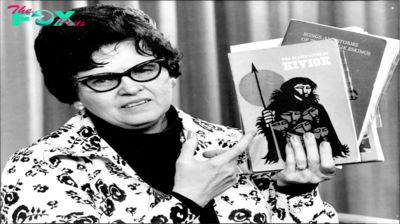
 History2d ago
History2d agoThe Woman Whose Crusade Gave Today’s Book-Banning Moms a Blueprint
-
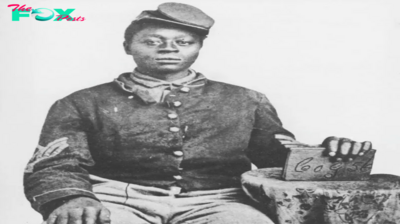
 History6d ago
History6d agoHow Black Civil War Patriots Should Be Remembered This Veterans Day
-
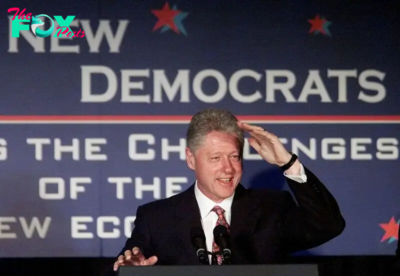
 History1w ago
History1w agoThe Democratic Party Realignment That Empowered Trump
-
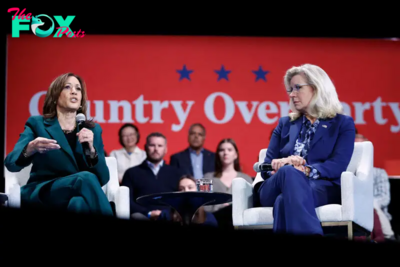
 History1w ago
History1w agoWhy People Should Stop Comparing the U.S. to Weimar Germany
-
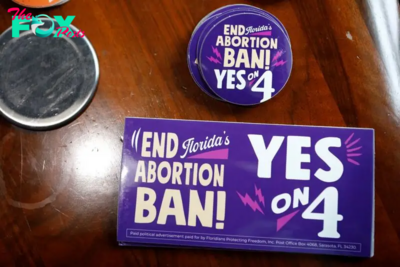
 History1w ago
History1w agoFlorida’s History Shows That Crossing Voters on Abortion Has Consequences
-

 History1w ago
History1w agoThe 1994 Campaign that Anticipated Trump’s Immigration Stance
-
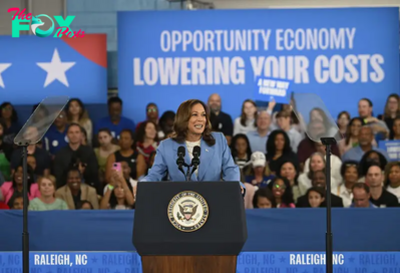
 History1w ago
History1w agoThe Kamala Harris ‘Opportunity Agenda for Black Men’ Might Be Good Politics, But History Reveals It Has Flaws


